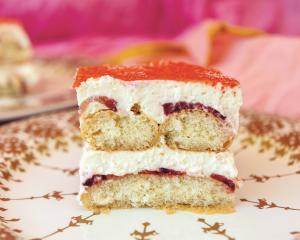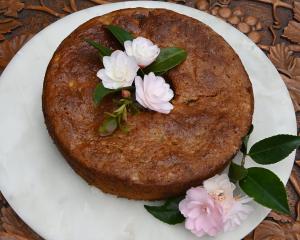Who doesn't like pasta? It is affordable, simple to prepare and comes in so many shapes and textures.
It can partner with meat, fish or vegetables, loves olive oil and, of course, mountains of freshly grated parmesan.
I have shared with you a small selection of pastas which can easily be obtained from ingredients found around our region.
My tip with pasta, whether fresh or dried, is to follow the directions; never overcook it as it should always have a texture when eaten (al dente); and never, ever coat the pasta in so much sauce that it is swimming.
Remember, less is more.
Basic pasta dough
Serves 4
This is a great recipe. One egg to 100g flour serves 1 person.
Ingredients
400g strong or pasta flour
4 eggs
pinch of fine salt
Method
Place the flour on a board or in a bowl and make a well in the centre. Crack the eggs into the well, add a pinch of salt then with a fork, mix the egg into the flour as much as possible so it's not sticky. Don't worry if there are lumps in the dough. Keep mixing and then when crumbs form put it on a flat surface and knead together. You can also speed this up by mixing your ingredients in a food processor until they bind.
Once it is all combined, knead until you have a silky smooth, elastic dough. You are aiming to achieve a playdough texture. If your dough is crumbly (too dry) add a teaspoon of olive oil. If the dough sticks to your hands (too wet) add a little extra flour.
Cover with cling film and rest for 30 minutes. You can roll your dough by hand using a rolling pin but you'll need some serious elbow grease to get your pasta sheets really thin.
If you are using a pasta roller, take a small fist-sized amount of dough, squash it flat with your fingers (remember to keep the rest of your dough covered with the cling film so it doesn't dry) and push it through the pasta roller on the widest setting. Fold into thirds, then repeat three times. Once you have a rough square shape, start working it through the machine, taking it down one setting at a time, until the thinnest setting. If your pasta is too sticky, it won't go through smoothly, so add a little flour to each side before you put it through the roller. Try to avoid too much flour. The less you use the better otherwise your pasta can start to feel heavy when cooked.
You should end up with a long sheet of pasta about 8-10cm wide. Place this on a flat surface with flour underneath to stop it from sticking. This is the most versatile form, as from this sheet you can create so many different shapes and dishes.
To make pappardelle
Sprinkle a little flour over both sides of the pasta sheet and fold it into thirds (short edges together). Trim the long edges straight with a sharp knife, and cut into 2.5cm-wide strips, lengthways. When you unfold the pasta you will have long pappardelle.
To cook fresh pasta get a large pot of salted water boiling, add pasta, stir to separate and cook until al dente (3-5 minutes). Drain and serve with your desired sauce.
Pappardelle with a rich ragu
Serves 4-6
This version of bolognaise will surprise as it is not complex and it doesn't have tins of tomato sauce and it doesn't call for spaghetti. This rich sauce needs to cling to wide ribbons of al dente pasta so you can slurp it off the fork.
Ingredients
100g smoked bacon or pancetta, roughly chopped (rind removed)
1 onion, finely diced
1 carrot, finely diced
2 sticks celery, peeled and finely diced
1kg minced beef, good quality
¼ cup red wine
140g tomato puree
2 beef stock cubes
2 bay leaves
1kg fresh lasagna sheets, cut into 1cm strips
parmesan, to serve
extra virgin olive oil
Method
Begin by making the ragu as this needs time to cook out to let the flavours develop.
Add 2 tablespoons of oil to a heavy-based frypan or wide saucepan. Add the bacon and cook off for a couple of minutes to extract the fat and flavour, then add the onions, carrot and celery. Stir well to combine and so it coats all in the bacon fat. Add the mince and break up any clumps that form. You want the mince to get lovely and brown and to look appealing (lumps aren't). This will take 15 minutes approx.
Add the red wine and reduce until almost disappeared, add the tomato puree and once again combine well so all the meat is coated. Fry for a minute or two so the flavours deepen. Add 500ml hot water with the 2 beef stock cubes dissolved in it.
Add the bay leaves, cover and lower the temperature to a very gentle simmer.
Cook for two hours to allow the flavours to deepen and for the sauce to thicken.
To cook the pasta: place a large deep pot of salted water on to boil. When boiling, add the pasta and stir briefly so that it doesn't stick. If the pasta is fresh it will only take a matter of minutes.
When cooked, drain immediately.
Add the pasta to the ragu and coat well in the sauce, season if needed and grate over some parmesan cheese. Toss to combine.
Serve in bowls with more cheese on top.
Linguine with cockles
Serves 4
Ingredients
400g linguine, dried
extra virgin olive oil
4 cloves garlic, sliced thinly
½ red chilli, seeds removed and cut finely
generous pinch dried chilli flakes
1kg cockles/clams
¼ cup white wine
handful parsley, roughly chopped
sea salt and freshly ground pepper
2 lemons
Method
Bring a large pot of salted water to the boil, add the linguine and stir to separate. Cook as directed on the packet. Drain.
While the pasta is cooking heat a large heavy-based fry pan to hot, add a generous glug of oil, add the cockles, garlic and chili. Shake the pan so the cockles move around, add the wine, cover with a lid and cook briefly until all the cockles are opened. Turn off the heat, add the parsley, a generous grind of pepper and squeeze of lemon.
Add the drained pasta and toss to combine.
Serve with more olive oil and lemon.












